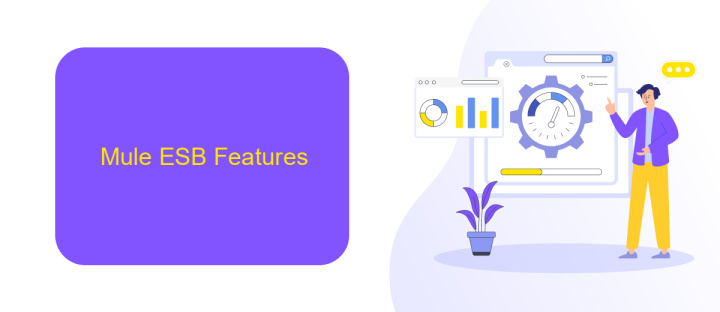Mule ESB Vs Informatica Cloud Integration
In the rapidly evolving landscape of enterprise integration, choosing the right solution is crucial for seamless operations. Mule ESB and Informatica Cloud Integration are two prominent platforms, each offering unique strengths tailored to different business needs. This article delves into a comparative analysis of these tools, exploring their features, capabilities, and potential benefits to help you make an informed decision.
Introduction
In the rapidly evolving landscape of enterprise technology, integrating various applications and data sources has become a critical need for businesses. Two prominent solutions that have emerged to address this need are Mule ESB and Informatica Cloud Integration. Both platforms offer robust features for connecting disparate systems, but they cater to different requirements and use cases.
- Mule ESB: An enterprise service bus that provides a lightweight, scalable integration framework for connecting applications, data, and devices.
- Informatica Cloud Integration: A comprehensive cloud-based data integration solution designed to streamline data management and integration processes.
Choosing the right integration platform depends on various factors such as scalability, ease of use, and specific business needs. Additionally, services like ApiX-Drive can further simplify the integration process by offering user-friendly tools to connect and automate workflows between different applications. Understanding the strengths and limitations of each platform can help businesses make an informed decision that aligns with their integration goals.
Mule ESB Features

Mule ESB (Enterprise Service Bus) offers a robust set of features that make it a powerful tool for integrating various systems and services. One of its key features is the ability to connect diverse applications and data sources, whether they are on-premises or in the cloud. This is achieved through its wide array of connectors and pre-built integration templates, which simplify the process of linking different systems. Additionally, Mule ESB supports real-time data processing and transformation, ensuring that data flows smoothly and efficiently between integrated systems.
Another significant feature of Mule ESB is its flexibility and scalability. It provides a unified platform that can handle complex integration scenarios, making it suitable for both small businesses and large enterprises. The platform's API-led connectivity approach allows for the creation and management of APIs, which can be reused across different projects. Moreover, Mule ESB integrates seamlessly with services like ApiX-Drive, enabling businesses to automate and streamline their workflows without extensive coding. This combination of features ensures that Mule ESB can meet the dynamic integration needs of modern enterprises.
Informatica Cloud Integration Features

Informatica Cloud Integration offers a robust set of features designed to streamline data integration processes for businesses of all sizes. This cloud-based solution provides a comprehensive platform for managing, integrating, and synchronizing data across various cloud and on-premises applications.
- Scalability: The platform can handle large volumes of data, making it suitable for enterprises with extensive data integration needs.
- Pre-built Connectors: Informatica offers a wide range of pre-built connectors to popular applications and databases, reducing the time and effort required for integration.
- Real-time Integration: With real-time data integration capabilities, businesses can ensure that their data is always up-to-date and accurate.
- Data Quality: The platform includes tools for data cleansing, validation, and enrichment, ensuring high-quality data for analytics and decision-making.
- Security: Informatica prioritizes data security with robust encryption and compliance features to protect sensitive information.
Additionally, services like ApiX-Drive can complement Informatica Cloud Integration by providing easy-to-use interfaces for setting up and managing integrations. ApiX-Drive offers a user-friendly platform that simplifies the integration process, allowing businesses to connect various applications without needing extensive technical knowledge. This combination can significantly enhance operational efficiency and data management capabilities.
Comparison of Key Features

Mule ESB and Informatica Cloud Integration are both powerful tools for enterprise integration, but they offer distinct features tailored to different needs. Mule ESB, known for its flexibility, is an open-source integration platform that allows developers to connect applications quickly and efficiently. On the other hand, Informatica Cloud Integration is a cloud-based solution that focuses on data management and integration, providing robust data transformation and governance capabilities.
When comparing these two platforms, it's essential to consider their key functionalities and how they align with specific business requirements. Both platforms support a variety of integration patterns, but their approaches and specific features can vary significantly.
- Flexibility: Mule ESB offers extensive customization options through its Anypoint Platform, while Informatica Cloud Integration provides pre-built connectors for rapid deployment.
- Scalability: Mule ESB excels in handling complex, large-scale integrations, whereas Informatica Cloud Integration is optimized for cloud environments and scalable data operations.
- Ease of Use: Informatica Cloud Integration boasts a user-friendly interface with drag-and-drop functionality, whereas Mule ESB requires more technical expertise for configuration.
- API Management: Both platforms offer API management capabilities, but Mule ESB's Anypoint Platform provides more comprehensive API lifecycle management.
In conclusion, the choice between Mule ESB and Informatica Cloud Integration depends on the specific needs of the organization. For highly customizable and complex integrations, Mule ESB is a strong contender. For streamlined, cloud-based data integration with an emphasis on ease of use, Informatica Cloud Integration is an excellent choice. Additionally, services like ApiX-Drive can further simplify integration processes by offering seamless connectivity between various applications and platforms.
Conclusion
In conclusion, both Mule ESB and Informatica Cloud Integration offer robust solutions for enterprise integration needs, each with its own strengths. Mule ESB excels in providing a highly flexible and scalable platform that is well-suited for complex, on-premises integration scenarios. Its open-source nature and extensive community support make it a cost-effective choice for organizations looking to customize their integration processes.
On the other hand, Informatica Cloud Integration stands out for its user-friendly interface and strong capabilities in cloud-based data integration. It is particularly beneficial for businesses aiming to streamline their data workflows with minimal technical overhead. For those looking to further simplify their integration tasks, services like ApiX-Drive can be invaluable. ApiX-Drive offers automated solutions that can seamlessly connect various applications, making the integration process even more efficient. Ultimately, the choice between Mule ESB and Informatica Cloud Integration should be guided by the specific integration requirements and technical landscape of your organization.


FAQ
What are the primary differences between Mule ESB and Informatica Cloud Integration?
Which platform is more suitable for real-time data integration?
How do Mule ESB and Informatica Cloud Integration handle scalability?
What are the typical use cases for Mule ESB compared to Informatica Cloud Integration?
Can I use third-party services to assist with the implementation of these platforms?
Routine tasks take a lot of time from employees? Do they burn out, do not have enough working day for the main duties and important things? Do you understand that the only way out of this situation in modern realities is automation? Try Apix-Drive for free and make sure that the online connector in 5 minutes of setting up integration will remove a significant part of the routine from your life and free up time for you and your employees.

